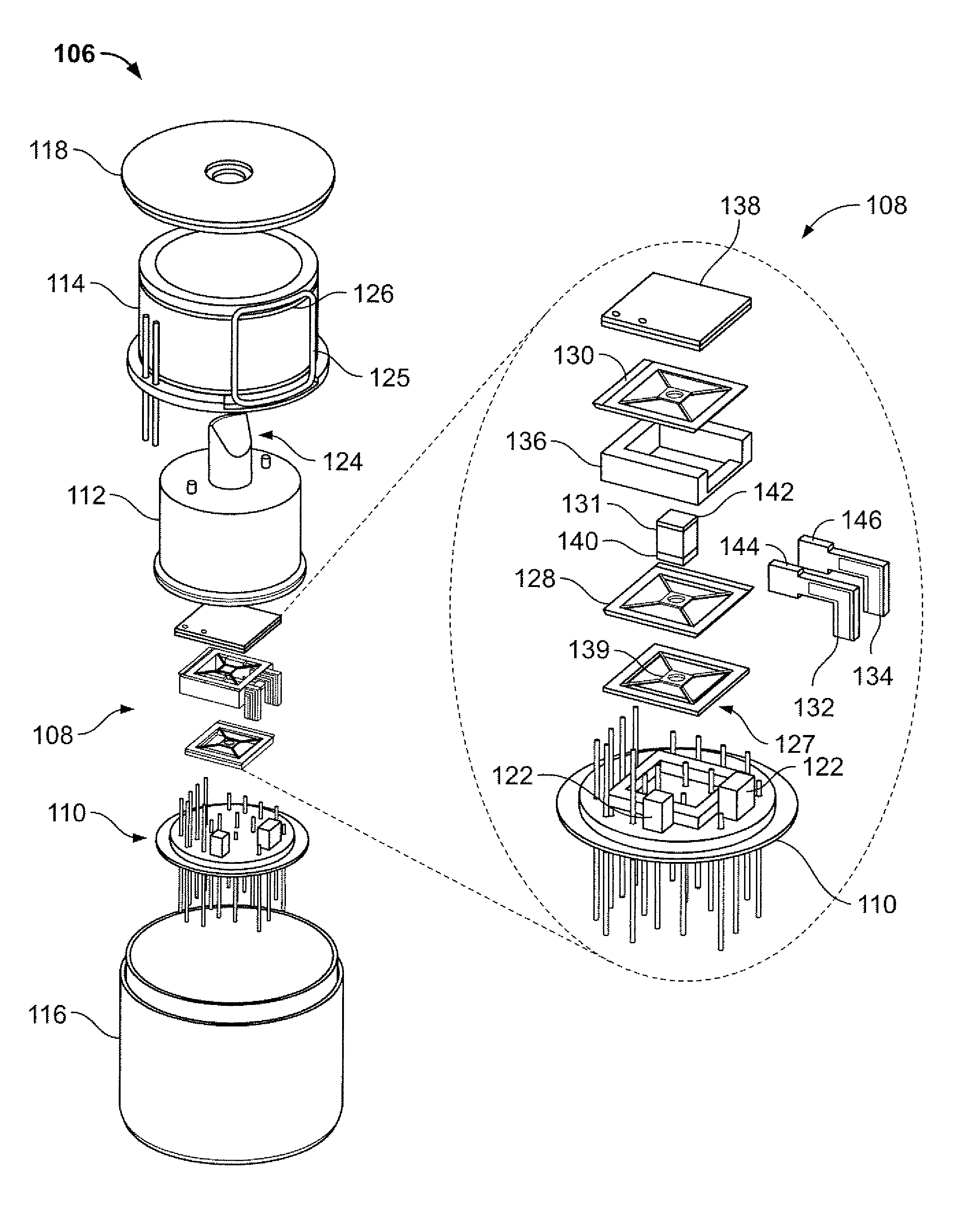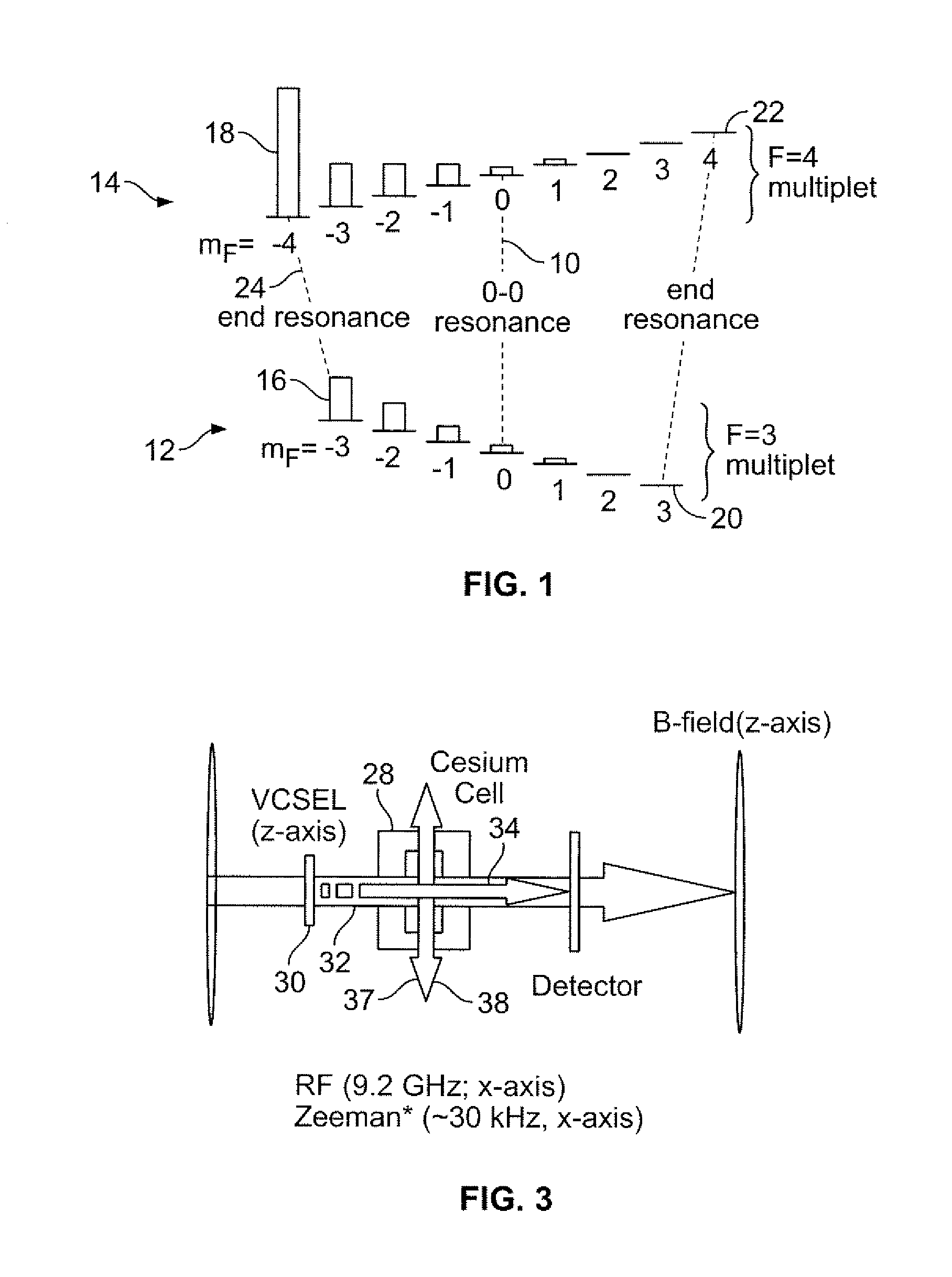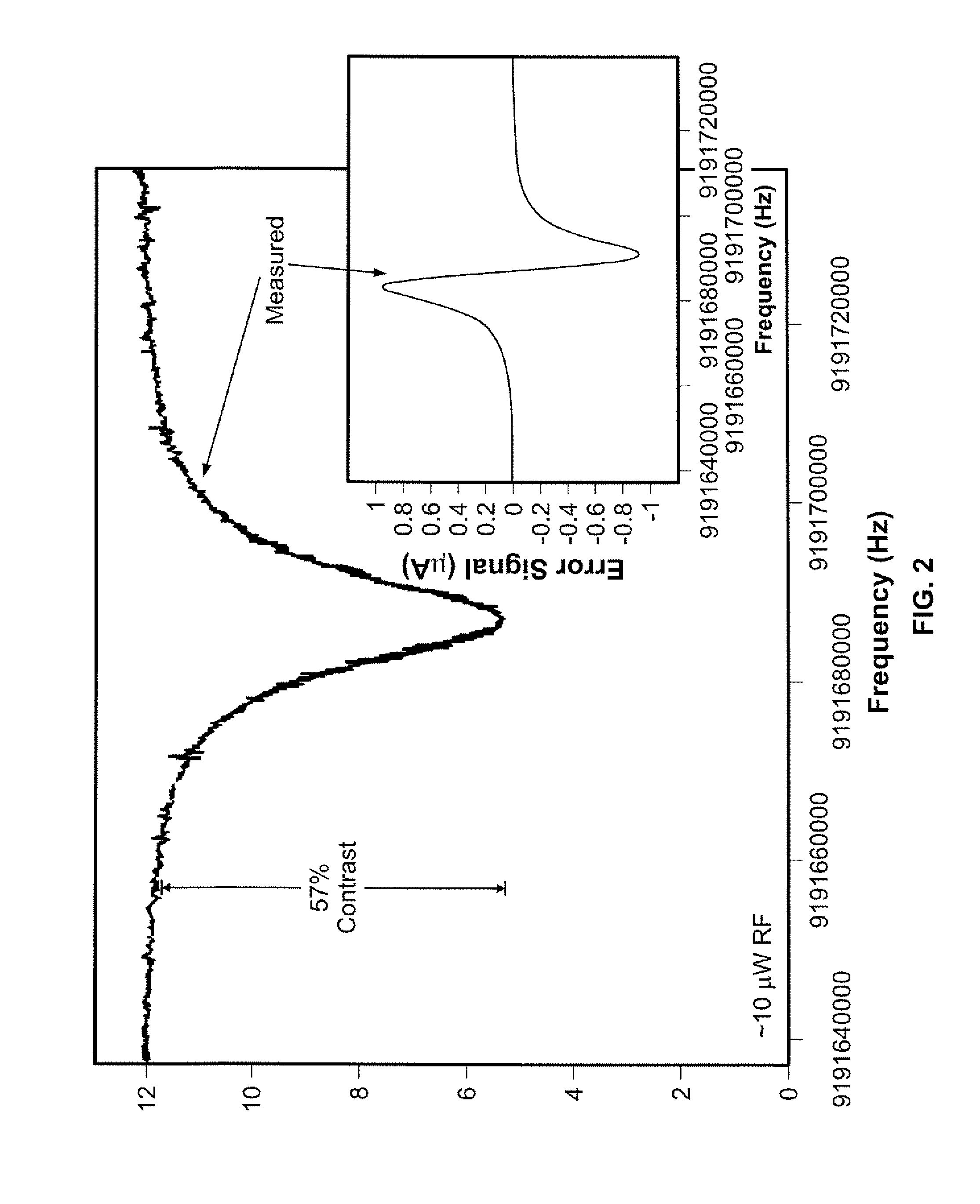Batch-fabricated, RF-interrogated, end transition, chip-scale atomic clock
a chip-scale, atomic clock technology, applied in the field of atomic clocks, can solve the problems of reducing the effectiveness of end-transition cpt techniques, limiting clock dimensions, and limiting performance/applications, and achieve the effect of improving signal-to-nois
- Summary
- Abstract
- Description
- Claims
- Application Information
AI Technical Summary
Benefits of technology
Problems solved by technology
Method used
Image
Examples
Embodiment Construction
[0033]FIG. 1 depicts the transition states of the atoms of an atomic clock vapor in the presence of magnetic fields. (For the present discussion, the atomic vapor can be made of cesium atoms, but the technique described below is applicable to any alkali element). The 0-0 transition (resonance) 10 is exhibited after the Zeeman sublevels are split in an external magnetic field. With no magnetic field applied, all the Zeeman sublevels occupy the same energy levels of the 0-0 transition 10. Applying a DC magnetic field causes the states 12, 14 to separate into a number of lower 12 and upper 14 Zeeman transition states at different energy levels. The states with the minimum difference in energy 16, 18, or left end resonance, and the maximum difference in energy 20, 22, or right end resonance, are called the end states (resonances).
[0034]The desired end-transition states for use in the present invention are the minimum end states (resonance) 16, 18 or maximum state. An optical vertical ca...
PUM
 Login to View More
Login to View More Abstract
Description
Claims
Application Information
 Login to View More
Login to View More - R&D
- Intellectual Property
- Life Sciences
- Materials
- Tech Scout
- Unparalleled Data Quality
- Higher Quality Content
- 60% Fewer Hallucinations
Browse by: Latest US Patents, China's latest patents, Technical Efficacy Thesaurus, Application Domain, Technology Topic, Popular Technical Reports.
© 2025 PatSnap. All rights reserved.Legal|Privacy policy|Modern Slavery Act Transparency Statement|Sitemap|About US| Contact US: help@patsnap.com



